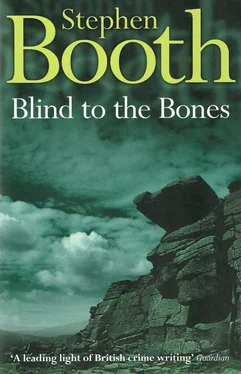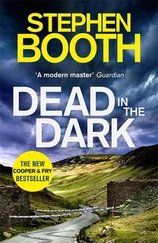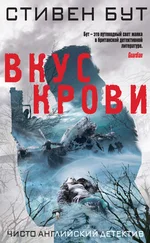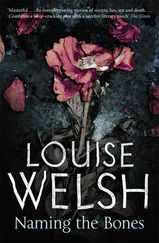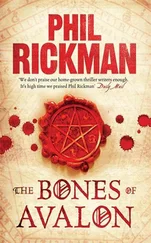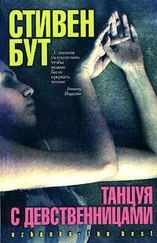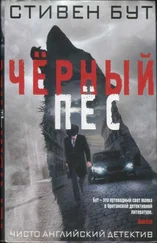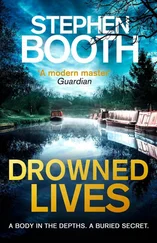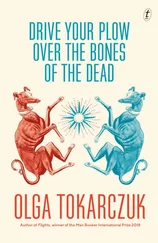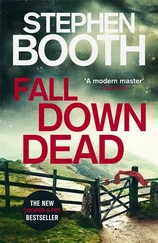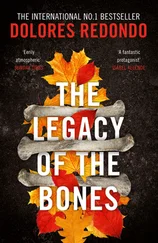But when he looked at the huge gritstone slabs nearer the church, with their ornately carved lettering, their biblical texts and complete family histories, Alton knew the answer. The people in Withens had not been divided by belief and tradition, but by wealth and position. So many churchyards in so many thousands of towns and villages were testament to that fact. The rich had been able to buy their way closer to Heaven.
But Christian burial was based on the belief that the dead would rise again one day. Like a seed, the body was planted in the earth to await rebirth.
The worst pest of all in the churchyard was the bracken that had spread down the hillside. Grazing sheep normally kept it down, but in the churchyard it was out of reach of the sheep because of the stone walls. Each year, the bracken grew from the debris of its own dead growth of the previous autumn. Recently, a frost had caught some of the new bracken fronds as they unfurled. They were already brown and dead and brittle, crumbling under his fingers. Even as the rest of the plant grew green and vibrant around it.
In one corner of the churchyard, a sycamore and some young hollies had claimed several graves as their own. Elsewhere, rosebay willowherb was beginning its spring offensive and the rhododendrons were threatening, the chestnuts were unfurling their leaves, the brambles, docks and thistles were spreading unhindered, and underfoot were the small, black, bullet-like heads of the plantains.
Alton knew there were a couple of dozen graves that hadn’t seen the light of day for years, and probably never would now. Their inscriptions took on an air of ironic neglect: ‘Sacred to the memory... here lieth the body... departed this life... Blessed are the dead which die in the Lord.’
The sycamores had spread through the churchyard like a plague, their whirling seed pods uncontrollable in the wind. When he had first arrived, Alton had persuaded the diocese to pay for the rampant sycamores to be cut back down to their roots, on the grounds that they were damaging the graves, pushing up the horizontal memorial stones. But already the remaining bases of the trees were shooting again — their amputated boles protruded from the edges of the gravestones like fingers trying to lift the stone slabs. Their fingernails were green — the new shoots of spring emerging from the grave.
There was something that no one ever mentioned, but which Alton couldn’t help thinking about whenever he saw the virulent green of the plant life burgeoning in his churchyard. Part of the problem was that in the older areas of the churchyard, the vegetation had too many nutrients to feed on. The sides of the ancient burial caskets would have been breached many years ago, allowing the peaty soil to trickle through the cracks in the wood and mingle with the bones and the mouldering clothes of the dead. And with the soil would go the insects and all the things that lived underground in the dark. And behind them, the roots of the plants colonizing the surface — pale, thin tendrils twining into the crevices and attaching themselves to wood and bones and desiccated flesh. Earth to earth, indeed. And then from earth back into the light, in an unstoppable burst of energy as nutrients surged up the stems of the plants into a green eruption every spring. It was almost as if the dead were always able to come back and overwhelm the living.
Because energy never died — it simply dispersed into the rest of the world and re-formed itself. In the churchyard of St Asaph’s, it seemed to re-form itself into brambles and thistles, docks and dandelions, everything that was green and damp and grew faster than he was able to control.
The vicar sighed at such thoughts. They had never entered his head until he had arrived in Withens and Hey Bridge. But he couldn’t be blamed. Even the bishop didn’t blame him. People still died in Withens. But there had not been a single wedding in his time in the village, nor a christening. It was as if the people had no objection to wearing funereal black to enter the church, but they drew the line at the frivolity of a white wedding gown or a christening robe, at bridesmaids in satiny pastels and bright buttonholes.
Alton heaved on the mat of vegetation. It began to come away in a large lump, a long, tangled blanket of it. It had shallow roots that came away in thin, white tendrils ending in clumps of peaty soil that crumbled and trickled back on to the ground. Alton found he had exposed a wide area of ground that hadn’t seen the light for many months. There were lots of insects wriggling and scurrying to get out of the way, and small snails dropping from the brambles on to the ground.
He hadn’t realized quite how shallow the peat was in the churchyard, but there seemed to be part of the bedrock showing below the surface. It was a wonder that anyone had ever found enough depth for burials. Maybe that was why the huge slabs had been laid horizontally, to conceal the fact that the graves themselves were shallow instead of the traditional six feet deep.
But then Alton frowned. He knew perfectly well that the bedrock here was millstone grit, not limestone — that was further south in the White Peak. The rock beneath the peat should be dark, not light grey, as this lump was that protruded through the surface among the insects and snails.
Finally, his eyes seemed to focus properly, and he saw the other grey shapes exposed on the surface. There was a series of curved strips like the bars of a cage. There was a flattened edge like a spatula. And there were dark holes in the object he had originally taken for a stone — holes full of shadows that seemed to stare back at him accusingly.
‘No!’
Without thinking, he threw the mat of vegetation back, covering the bones he had exposed, as if putting them out of sight would make them cease to exist. Alton screwed up his face, wishing that he could reduce the bones to dust by the power of his thoughts.
‘Oh, God,’ he said. ‘Oh, God, why have you done this to me?’
‘For heaven’s sake, get these people moved away,’ said DI Hitchens.
A couple of uniformed officers moved into action. Ben Cooper hadn’t noticed the small crowd that had been gathering on the other side of the churchyard wall. He saw some of the Oxley boys among them, and their neighbour, Mrs Wallwin. And there was Fran Oxley, too, at the back of the crowd. Unlike the others, she wasn’t staring at the bones on the ground, but at Cooper himself. He met her eyes, wondering what it was she was trying to tell him. Of all the Oxleys, she was the one he felt he had come closest to communicating with. Yet even Fran wasn’t able to speak to him directly, to tell him anything of what she knew. Cooper was an outsider. And that was too much of a boundary for her to cross.
‘Where’s the vicar now?’ said Hitchens. ‘Mr Alton, is it?’
‘He’s inside, sir.’
‘See if he’s ready to make a statement yet.’
Cooper noticed that the ivy covering the wall of the church had been cut back at some time. It had clambered over the guttering and spread right across the roof towards the ridge before a line had been drawn. If it had been left to itself, no doubt it would have crossed the ridge, too, and spread down the other side, until the entire church was covered. But the ivy stems had been brutally hacked off about three feet below the gutter and the suckers had been peeled from the stonework. You could still see the little white marks where the ivy had taken a grip.
But whoever had cut back the ivy here hadn’t bothered to remove the tendrils that had been growing through the gaps between the roof tiles. Cut off from their parent stem, they had turned black and dry, some of them still sticking vertically into the air. Cooper supposed that trying to get them out would have pulled the tiles loose. But now there was a little petrified forest on the roof.
Читать дальше
Конец ознакомительного отрывка
Купить книгу
